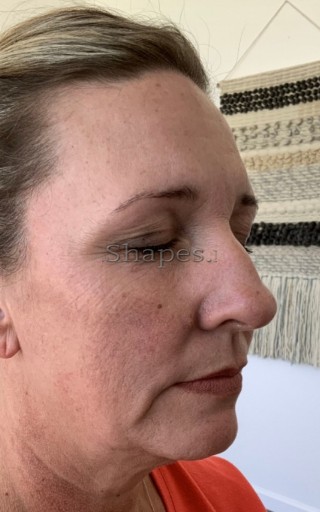
This new study by American researchers offers the first experimental evidence showing how exercise can directly slow down, or even prevent, age-related macular degeneration.
A cause and effect relationship that has never been clearly demonstrated until now
Whether it’s reducing the risk of cardiovascular disease or improving cognitive functioning, exercise has important health benefits. But although observational studies have previously suggested that physical activity reduces the Age-related macular degeneration (AMD), until now, it had been difficult to estimate precisely to what extent this relationship was found to be causal.
” The scientific community has long wondered if maintaining a healthy lifestyle can delay or even prevent the development of macular degeneration “, Explain Bradley Gelfand, researcher atuniversity of virginia, main author of this new study published in the journal Investigative Ophthalmology & Visual Science. ” Historically, the answer to this question has been to conduct surveys of people, taking into account their diet and their level of physical activity.. ”
However, this kind of study based on the subjects’ self-evaluation is likely to be biased, and even if an association between the increase in physical activity and the reduction in vision loss is observed, this does not ‘does not necessarily imply a direct cause and effect link.
32 to 45% lower blood vessel growth in active mice
Gelfand and his team therefore set up a series of experiments on mice to determine if physical activity had a direct effect on macular degeneration. Two groups of mice were compared: the first had an exercise wheel in its cage, while the second was deprived of it. According to the researchers, the fact that rodents were free to practice was important, since the constraint would have induced stress reactions that could negatively influence the results.
After a period of four weeks, researchers used lasers to cause a form of eye damage called choroidal neovascularization (CNV), a major factor in many forms of age-related vision loss that involves excessive growth of blood vessels in a certain part of the eye. Thanks to laser-induced CNV, they were then able to model this factor of vision loss in mice.
In two experiments, the team discovered that the growth of blood vessels in mice with access to the exercise wheel was 32 to 45% lower than that of the other group, by being deprived. More interestingly, it turned out that physical exercise following a laser injury did not reduce the damage caused by the CNV: only the mice having benefited from a pre-exercise conditioning showed a reduction in lesions. subsequent oculars.

Identify precisely the mechanisms at work in order to develop a treatment offering the same benefits
All of this suggests that a small amount of exercise seems to offer direct preventive results against certain types of degenerative vision loss. Although the specific molecular mechanism ensuring this macular protection is not known, scientists believe that exercise confers immunomodulatory effects that can reduce the possible inflammatory actions that cause age-related macular degeneration.
In the future, the research team intends to identify precisely the main mechanisms at work in order to develop a pharmaceutical treatment imitating this natural process.
” The next step is to look at how and why it happens, and see if we can develop a treatment or approach that will deliver these benefits without the need for sustained and regular physical activity. “, Explain Gelfand. ” We are talking about an elderly population of macular degeneration, many of whom are unable to follow the type of exercise program that may be required to gain some benefit.. ”

